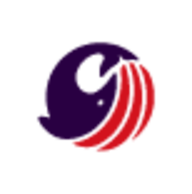

SonarQube Server and OWASP ZAP compete in the software development and security tools category. Based on features and integration capabilities, SonarQube has an edge in code quality analysis, while OWASP ZAP stands out for security scanning and cost-effectiveness.
Features: SonarQube Server provides robust support for over 20 programming languages, customizable quality profiles and gates, and integration with Eclipse for pre-commit checks. It offers detailed reporting, code duplication monitoring, and valuable plugins like "3D Code Metrics." OWASP ZAP includes features like intercepting proxies, automated scanning, fuzzer tools, and multi-platform support, focusing heavily on security scanning with a strong API for automation.
Room for Improvement: SonarQube Server requires enhancements in security updates, reporting, and customization. Users seek better dynamic code analysis, API documentation, and integration with more DevOps tools, alongside reduced false positives. OWASP ZAP could improve its reporting and integration with more security feeds, refining automation processes and user interface, and reducing false positives.
Ease of Deployment and Customer Service: SonarQube Server supports varied deployment options like Hybrid Cloud, On-premises, and Public Cloud, offering flexibility but with costly official support. It benefits from a large community providing additional support. OWASP ZAP, mainly deployed On-premises and Public Cloud, relies on community support, benefiting from open-source nature and cost savings but lacking a formal support structure.
Pricing and ROI: SonarQube Server offers both free and paid options, with premium editions priced based on lines of code. The open-source Community edition provides immense value without licensing costs, though premium versions may be costly for some. Users report improved code quality and reduced rework as positive ROI. OWASP ZAP is entirely open-source, offering zero licensing costs, appealing to budget-conscious users and small enterprises, providing broad usage and integration capabilities despite fewer extensive features compared to commercial solutions.
| Product | Market Share (%) |
|---|---|
| SonarQube Server (formerly SonarQube) | 19.7% |
| OWASP Zap | 4.5% |
| Other | 75.8% |


| Company Size | Count |
|---|---|
| Small Business | 10 |
| Midsize Enterprise | 11 |
| Large Enterprise | 21 |
| Company Size | Count |
|---|---|
| Small Business | 32 |
| Midsize Enterprise | 21 |
| Large Enterprise | 75 |
OWASP Zap is a free and open-source web application security scanner.
The solution helps developers identify vulnerabilities in their web applications by actively scanning for common security issues.
With its user-friendly interface and powerful features, Zap is a popular choice among developers for ensuring the security of their web applications.
SonarQube Server enhances code quality and security via static code analysis. It detects vulnerabilities, improves standards, and reduces technical debt, integrating into CI/CD pipelines.
SonarQube Server is a comprehensive tool for enhancing code quality and security. It offers static code analysis to identify vulnerabilities, improve coding standards, and reduce technical debt. By integrating into CI/CD pipelines, it provides automated checks for adherence to best practices. Organizations use it for code inspection, security testing, and compliance, ensuring development environments with better maintainability and fewer issues.
What are the key features of SonarQube Server?Many industries implement SonarQube Server to uphold coding standards, maintain security protocols, and streamline their software development lifecycle. In sectors like finance and healthcare, adhering to regulations and ensuring reliable software is critical, making SonarQube Server invaluable. It is often integrated into CI/CD pipelines, ensuring that code changes meet set standards before deployment. This approach enhances productivity and maintains compliance with industry-specific requirements.
We monitor all Static Application Security Testing (SAST) reviews to prevent fraudulent reviews and keep review quality high. We do not post reviews by company employees or direct competitors. We validate each review for authenticity via cross-reference with LinkedIn, and personal follow-up with the reviewer when necessary.